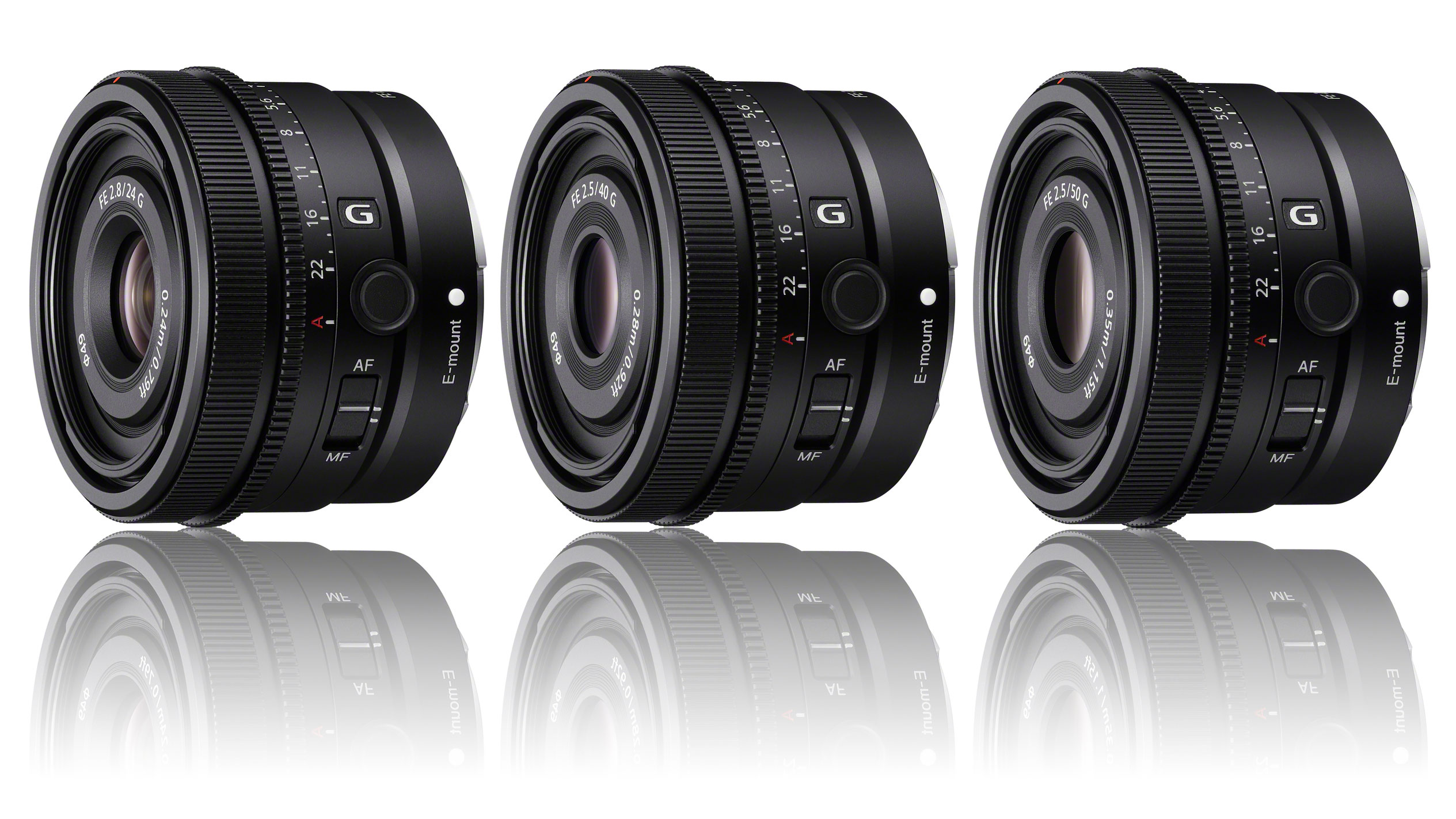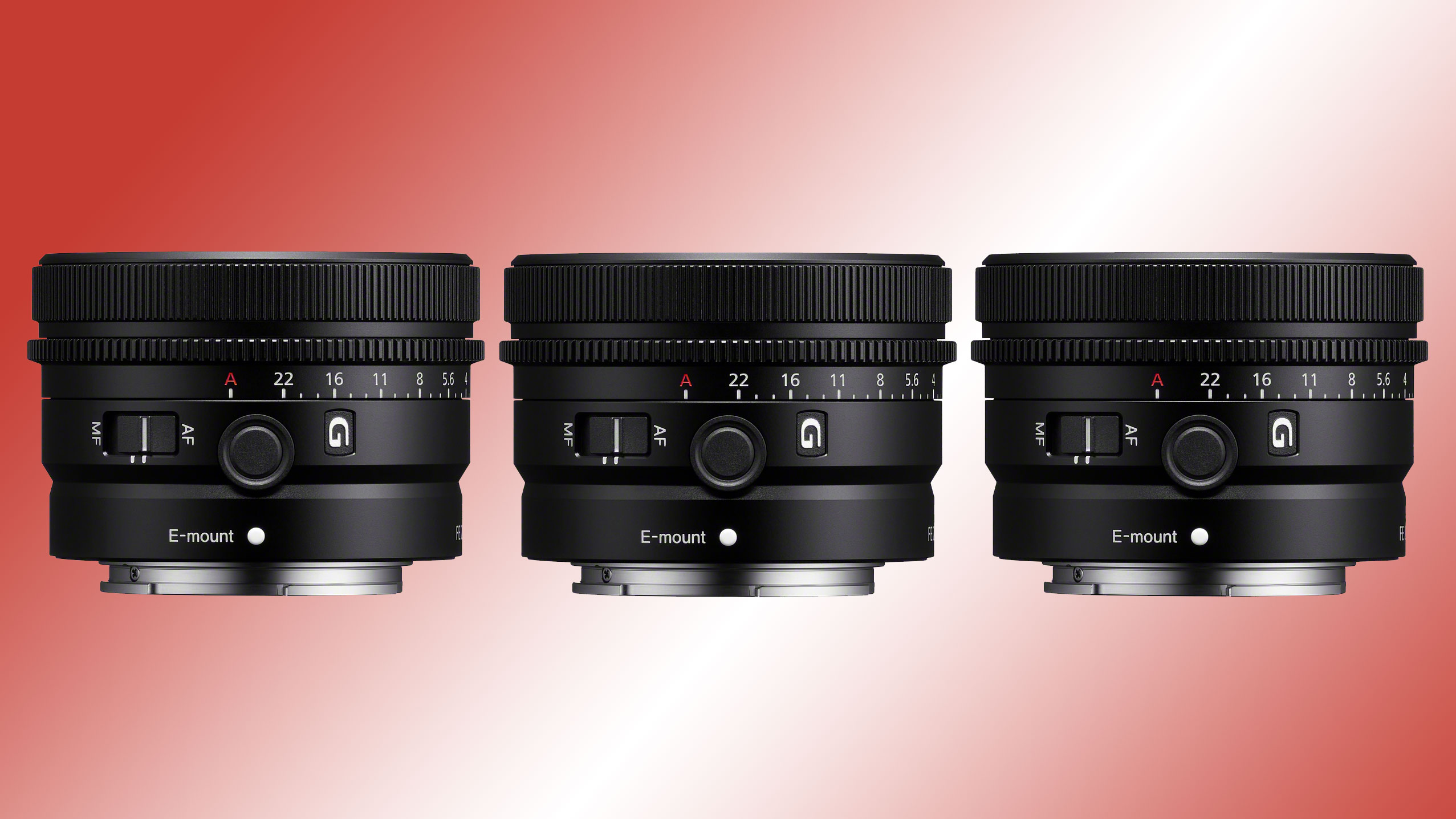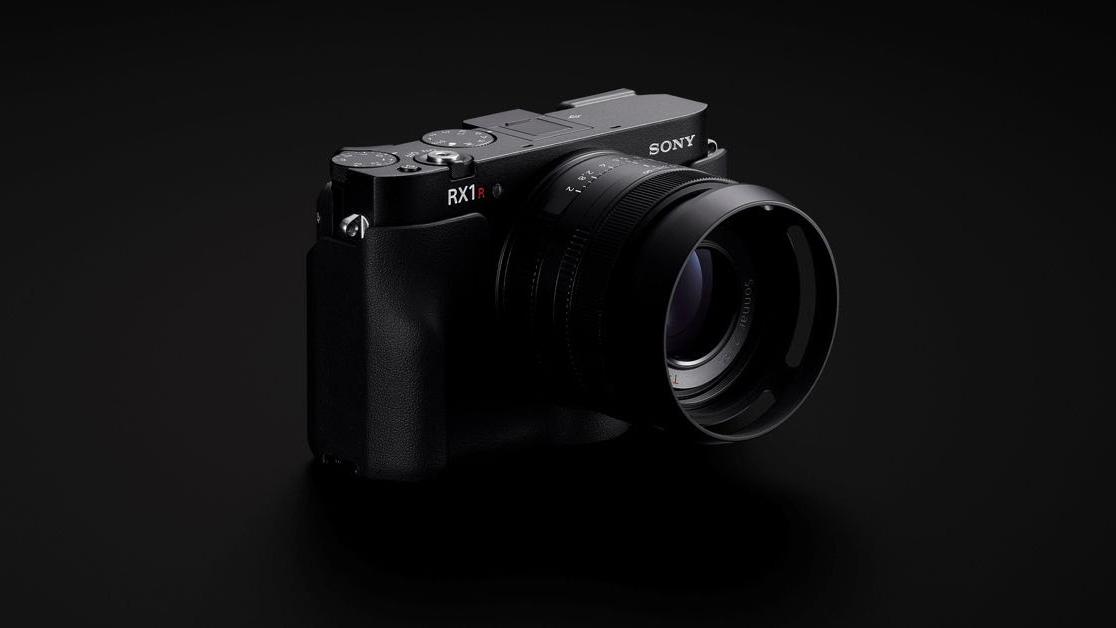Sony launches THREE new compact prime lenses for its full frame mirrorless cameras
The new FE 24mm f/2.8 G, 40mm f/2.5 G and 50mm f/2.5 G are small, light and designed for both stills and video

Hot on the heels of the high-end FE 50mm F1.2 G Master launched on March 16, Sony has revealed three new prime lenses at the opposite end of the size (and price) spectrum. The Sony FE 24mm f/2.8 G, 40mm f/2.5 G and 50mm f/2.5 G are compact, highly portable lenses between them still take up less space than a regular standard zoom.
Sony’s full frame mirrorless cameras are remarkably compact; unfortunately, a lot of Sony lenses are quite the opposite, and we’ve often remarked that they can make the cameras feel front-heavy and unbalanced.
Not any more! If you like your lenses as small and portable as your cameras, this trio of new optics should fit the bill perfectly. Not only are they small and light, they are actually pretty much the same size and share the same 49mm filter mount.
Better still, they are optimised for video as well as stills. All three have aperture rings and a switch on the underside to ‘declick’ the diaphragm for smooth and silent aperture control while filming.
• We have already received and tested samples of all three lenses. See the links to our full reviews below!

Sony FE 24mm F2.8 G
This is the widest of the three new lenses. Despite this, it shares the same 68mm diameter and 44mm length as the other two. The maximum aperture is slightly down at f/2.8 versus f/2.5 for the other two, but that’s a small difference. All three lenses, this one included, use fast and quiet Double Linear AF motors, and despite their small size, Sony has still found space for a Focus Hold button.
This lens uses 8 elements in 7 groups, including three aspherical lenses and one ED (extra low dispersion) element. The weight is just 162g, and all three lenses are within the 162-174g range.
The best camera deals, reviews, product advice, and unmissable photography news, direct to your inbox!
• Read our full Sony FE 24mm F2.8 G review

Sony FE 40mm F2.5G
The Sony FE 24mm F2.8 G is a wide-angle prime, but the Sony FE 40mm F2.5G is a more general ‘walk around’ lens with a 40mm focal length only slightly longer than the classic 35mm ’street photography’ lens. The f/2.5 maximum aperture means its a third of a stop faster than an f/2.8 lens. It’s not as fast as the Sigma 35mm F2 DG DN Contemporary we have recently reviewed, but it is about half the size.
The Sony FE 40mm F2.5G is made up of 9 elements in 9 groups, including no fewer than three aspherical lenses, and weighs 173g.
• Read our full Sony FE 40mm F2.5 G review

Sony FE 50mm F2.5 G
The Sony FE 50mm F2.5 G is only 10mm longer in focal length than the 40mm, but corresponds more closely with the classic ‘standard’ focal length and angle of view for a full frame camera.
This lens uses 9 elements in 9 groups, with two aspherical lenses and one ED element. At 174g this is the heaviest of the three, but they are so close in weight that you are unlikely to feel any difference.
• Read our full Sony FE 50mm F2.5 G review

Price and availability
All three lenses are on sale from April 2021 at a suggested retail price of around $600 / £630 / AU$999 each. They are not especially cheap, nor especially fast, but they are extremely compact and light, and the aperture ring, ‘de-click’ mechanism and Focus Hold button are premium features.
Read more:
• Best Sony lenses
• Best Sony cameras
• Best 50mm lenses
• Sony FE 24mm F1.4 GM
• Sony FE 35mm F1.4 GM

Rod is an independent photography journalist and editor, and a long-standing Digital Camera World contributor, having previously worked as DCW's Group Reviews editor. Before that he has been technique editor on N-Photo, Head of Testing for the photography division and Camera Channel editor on TechRadar, as well as contributing to many other publications. He has been writing about photography technique, photo editing and digital cameras since they first appeared, and before that began his career writing about film photography. He has used and reviewed practically every interchangeable lens camera launched in the past 20 years, from entry-level DSLRs to medium format cameras, together with lenses, tripods, gimbals, light meters, camera bags and more. Rod has his own camera gear blog at fotovolo.com but also writes about photo-editing applications and techniques at lifeafterphotoshop.com
